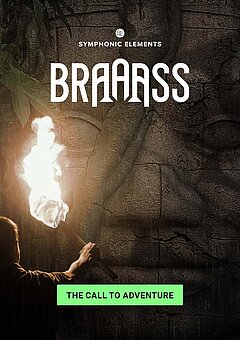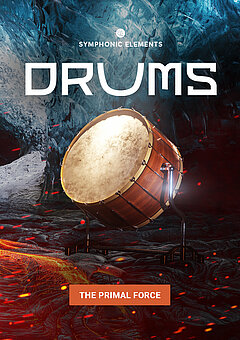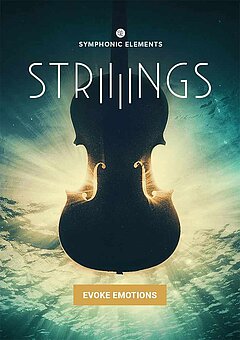The Ultimate Guide to EDM & Trap Swells and Brass Stabs
How to create dynamic and punchy brass that sits just right in the mix, giving your songs all the raw power and cinematic expression you want.
DECEMBER 3RD, 2022
EDM and Trap thrives on its powerful and strong elements that support and enhance the dynamics of the track. Read this article and learn why brass stabs and swells are one of the most powerful tools and how your track can benefit from them.
Shaping your brass
There are few things more rewarding than nailing a well-mixed, punchy brass stab — this sound is a staple of trap and EDM, especially in drops. To sell a brass stab, it needs a sharp transient spanning the full frequency range; without a bright attack, it won’t cut through the mix and have the impact you’re looking for. It also means having a solid low end thump to give it some weight and show it’s a force to be reckoned with. The highs and lows are relatively easy to balance, but the tricky part is the midrange. Brass often has a “woofing” quality to it, which is simply a part of the instrument’s timbre ... but when producing trap and EDM, failing to address this can throw off the entire mix.
By cutting into the midrange a bit (or a lot, depending on the sound you’re going for), you can completely open up the sound of the brass and help it mesh with the more heavily produced elements in the mix. If you’re struggling with finding the right amount, here’s a simple test: Mute the brass. If the arrangement suddenly loses a ton of midrange, it’s probably too strong in the brass. Then again, many producers cut away too much from the midrange, so this could actually mean that the rest of the arrangement needs a little more energy in the same frequency range! Use your best judgment and know that your ear for this will improve over time.
Processing stabs
Once the frequency balance is just right, it’s time to look at processing techniques. Number 1 is to compress the stabs with a relatively short attack and fast release, which will make the tail “flare” and give it some attitude on the back end. As a result, you might need to taper the releases so they don’t ring out too long, robbing it of some punchiness. You can do this with volume automation or even a volume shaping plugin if the rhythm is consistent enough for it to sound natural.
Now that the contour is just right, there are tons of ways to manipulate it — using grainy distortion like you can find in Finisher RETRO, for example. Distortion in general is a great tool to use on brass as it already has a bold and bright quality that you can accentuate rather easily, especially in conjunction with hard compression and expansion like Ableton Live’s OTT preset; you can get a similar effect by using the Xfer or Slate Digital recreations if you use a different DAW.
If you want to save on time and ensure you get the most professional sound possible, try out Symphonic Elements BRAAASS — it contains perfectly edited brass stabs straight from Hans Zimmer’s personal library and comes with an onboard FX suite, including a Finisher perfectly tailored to the unique needs of brass production! Under the Style section, pull up the Huge Stabs option and you’ll be on your way to a huge brass sound in moments!
Designing the perfect swell
Don’t overlook this close companion of the ubiquitous brass stab. In the right context, a triumphant swell can mean the difference between a boring old riser and a mighty pre-drop build, or even help fill out empty space in an interlude and give it a grander quality. There are two basic components of a great brass swell: dynamics and timbre. If the volume level doesn’t increase throughout the swell, there’s no motion for the listener to latch onto. But if the timbre doesn’t change (i.e. grow brighter and more intense), it will feel fake and lack the drama needed to sell the effect.
After you solidify the shape of the swell, you’ll need to consider how it works in the context of the mix. Like in the section above, the midrange may give you some difficulty in trap and EDM, especially since many other elements are likely synthesized and have a more processed sound by nature. Electronic music has some advantages over an orchestral setting, though — for example, you can automate the dry/wet knob of a reverb plugin to allow the sound to grow even more dramatically into a massive release tail. If you use this technique leading into the end of a drop, allowing it to ring out can help create a seamless transition that smoothes over the rapid adjustments that inevitably occur during these changes. Of course, this is the exact opposite of what you typically want from stabs!
On the processing side, you’ll generally need to be more reserved than you would be with stabs. Part of the reason is that swells are often chords rather than single notes (and chords often don’t distort “cleanly”), but heavy processing like distortion may also constrict the dynamic range of your swells, which of course is the last thing you want when it’s time to build tension! Instead, focus on clipping the sound a bit toward the end of the swell and add some bite to the brightest part of the sound. This will help accentuate the drama of each swell even further and give a powerful transition device you can use at will! The trick here is to focus on gain staging, gauging exactly when you can start hearing the effects kick in so you don’t go too heavy too early.
Wrapping up
Brass stabs and swells are one of the most powerful tools you can have at your disposal, and most producers only take them to a fraction of their potential — leaving the door wide open for you to push the envelope and work it into your sound! There are tons of different ways to shape them, and you can even play with putting them through your compression sidechain vs. leaving them unaffected in the mix; each will give you a radically different sound that you can adjust to your personal taste.
If you need a great brass library that does all the above and more with a simple interface that makes it easy to get the sound you want quickly, look no further than Symphonic Elements BRAAASS. In no time, you’ll have a punchy, grandiose brass sound perfectly suited for your most audacious trap and EDM tracks!
About the Author
Harry Lodes is a copywriter, marketing consultant and content writer for audio and ecommerce brands. He lives in the Philadelphia area, releasing Eastern/Western hybrid EDM under the artist name KAIRI hearkening back to his roots in Berklee College of Music.
Stay up to date
Sign up and we’ll send you an e-mail with product news and helpful stuff every now and then. You may unsubscribe at any time.
Defy Limits
We develop software solutions that enable people to create, consume and interact with music.





